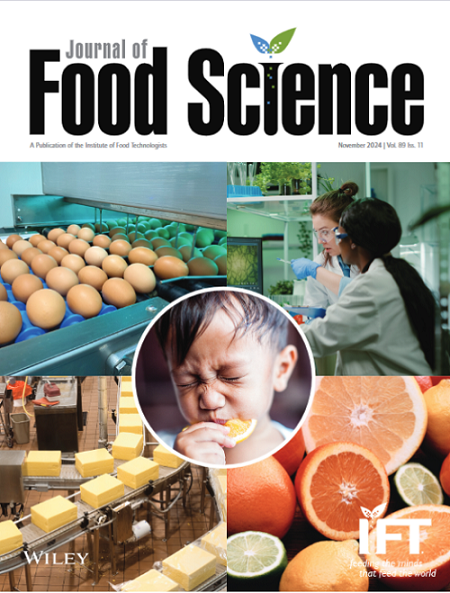Twin-screw extrusion retains industrial hemp byproduct (hemp flakes) functionality
Abstract
Consumer recognition of the health benefits of industrial hemp cannabidiol (CBD) products has increased its value to consumers. Consequently, there is a need to explore industrial hemp byproducts to improve sustainability and foster a circular economy. Extrusion processing was conducted with formulations made with hemp flakes, a byproduct of CBD oil extraction based on corn flour with 5%, 10%, and 15% hemp flakes replacement using a laboratory-scale conical twin-screw extruder. The impacts of formulation, barrel temperature, and screw speed on extrudates were evaluated. Cannabichromene (CBC), cannabinol (CBN), cannabidiolic acid (CBDA), cannabigerol (CBG), and CBD were determined with high-performance liquid chromatography before and postextrusion. Antioxidant potential (total polyphenol content [TPC] and 1,1-diphenyl-1-picrylhydrazyl radical scavenging assay [DPPH]) and ferric-reducing antioxidant potential (FRAP) were determined similarly. Increasing hemp flakes in the formula reduced pasting properties significantly (p ≤ 0.05). Expansion ratio (ER) showed significant linear effects with the amount of hemp flakes in the formula (p ≤ 0.05) and die temperature (p ≤ 0.05), while the 10% hemp formula recorded the highest ER of 3.24 (p ≤ 0.05). Extrusion generally reduced TPC, DPPH, FRAP, and cannabinoids compared to raw formulas. Low screw speeds and medium barrel temperatures displayed high retention of cannabinoids and antioxidants. Low screw speeds might have allowed adequate shearing, mixing, and an extended high-pressure exposure leading to the release of bound polyphenols, antioxidants, and cannabinoids. Some extrusion parameters can maintain cannabinoids and antioxidants in hemp byproducts while transforming them into puffed food products. These findings directly affect the industry, providing valuable insights for practical application.
Practical Application
Extrusion cooking remains one of the most economical methods of valorizing agricultural byproducts. This work developed extrusion parameters applicable to the food industry for making quality puffed food products. It could apply to snacks, breakfast cereals, animal feed, and others with desirable consumer properties and retained functionality for improving health and wellness.

 求助内容:
求助内容: 应助结果提醒方式:
应助结果提醒方式:


